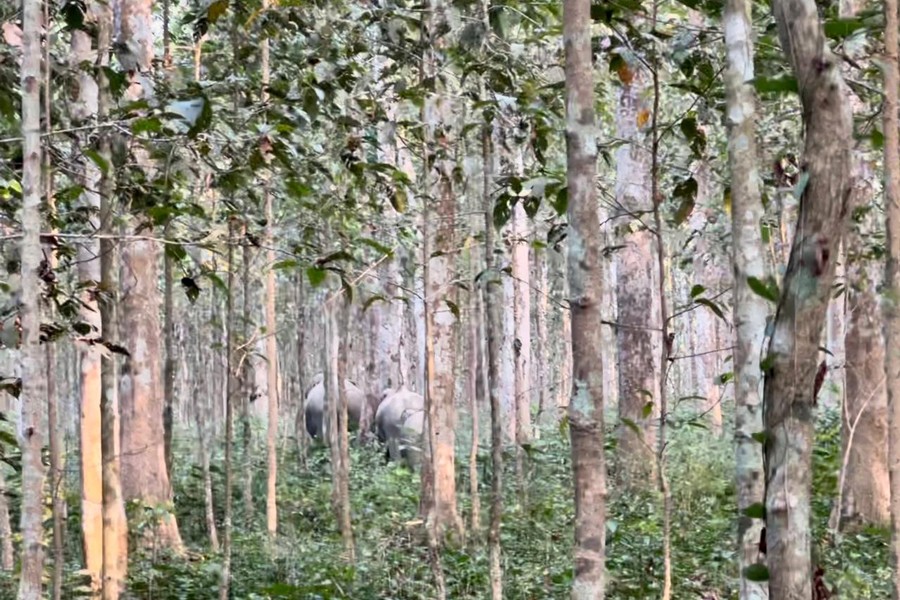 A partial view of the Fasiakhaly Wildlife Sanctuary in Chakaria upazila of Cox's Bazar district — FE Photo
A partial view of the Fasiakhaly Wildlife Sanctuary in Chakaria upazila of Cox's Bazar district — FE Photo COX'S BAZAR, May 26: Once rich in biodiversity, Fasiakhaly Wildlife Sanctuary in Chakaria upazila of Cox's Bazar district has started losing its large collection of flora and fauna.
Various species of ancient trees and animals which existed in abundance here in the past
are no more seen that extensively.
Established in 2007 on 1302 hectares of land, the wildlife habitat can no longer retain its natural character due to a close proximity to concrete buildings being developed largely under the impact of human civilisation.
Residents of these settlements are directly dependent on the forest. They make a living by using its resources. As a result, the ecology and biodiversity of the forest are in jeopardy.
The nearby human habitation plays direct and indirect roles in dwindling of the forest which is a prominent shelter for the primitive plants and animals there.
Fasiakhaly Wildlife Sanctuary is one of the forests in Bangladesh that have been recognised as wildlife sanctuaries for the biodiversity conservation.
The sanctuary which is a tropical evergreen forest is under the jurisdiction of Cox's Bazar North Forest Division.
About 48 km north of the tourist town Cox's Bazar, the sanctuary was once well known for its evergreen forest.
Ancient trees and animals are no found that frequently along the evergreen and mixed evergreen hill forest as in the past.
The forest was home to a large variety of timber trees including gorjan, teak, telsur and dhakijam.
Alongside naturally growing trees, there are also raised gardens. The forest remains vibrant with the constant chirping of different species of birds.
In the shade of huge towering trees, there are various creeping shrubs and natural bamboo bushes.
In addition to animals like wild boars, cheetahs, deer, herds of wild elephants can be seen. These wild elephants sometimes roam in the forest alone, sometimes in groups.
Local conscious circles say that at least 2,000 ancient plants have disappeared in the sanctuary in the last 10 years due to evil influence of locals.
The number of animals in the forest has also decreased putting the sanctuary in the doldrums.
Fazlul Quader Chowdhury, convener of Dharitri Rakkay Amra (Dhora) Cox's Bazar, said due to the development of several human settlements around Fasiakhaly Wildlife Sanctuary, local people extract various types of wood and other natural resources from the forest. As a result, the biodiversity here is currently under threat. Long-term conservation management is necessary to overcome this situation.
Fasiakhaly Wildlife Sanctuary is currently managed through a co-management system. Reducing the dependence on forest by creating alternative employment for the local population will protect the forest and forest resources and ensure a safe habitat for various wildlife.
Cox's Bazar North Forest Division's Fasiakhaly Range Officer Md Mehraj Uddin said, "No one is allowed to enter the sanctuary. The forest is completely intact and protected.
The forest department has a successful project for the forest-dependent local residents.
Through this project, financial benefits and employment have been arranged for the locals here, which has reduced pressure on the forest."
"Some unscrupulous people are cutting down the timber trees here taking advantage of the absence of the forest department officials," he added.
Range officer Mehraj said that legal action and operation against these unscrupulous people are underway.
© 2024 - All Rights with The Financial Express
